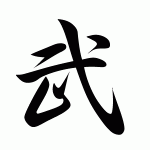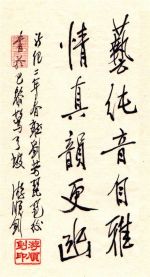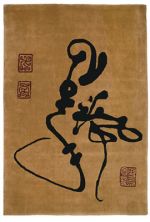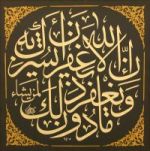China, Japan and other Islamic countries
Speaking about the oriental calligraphy it`s accustomed to imply Japan, China and Islamic (arabic countries) countries.
Chinese calligraphy is said to be the forefather of the japanese one.The first mentions of it date back to the middle of the 2-1-th millenium b.c.,meanwhile the history of the japanese calligraphy dates back to the beginning of the 5-th century b.c. It was that period when first patterns of the chinese hieroglyphic writing began to spread across japan and calligraphic writing uprose in the 7-th century.
In chinese the term “calligraphy” is translated as “shufa” (writing rules) and along with it shitsui (chenese theatre) can express peculiar traits of the chenese artistic mentality more thoroughly. First calligraphic inscriptions appeared on shells “dziagunen`” in Chine. During Tsi Shi - huandi ruling a new style of writing was affirmed – siaochjuan – writing on small seals and was used for imperial documents.
By the end of Han dynasty the calligraphy art achieved a very high level that was due to the perfection of calligraphy skills.
The diversity of different calligraphic styles is peculiar to the chinese calligraphy.Among calligraphic styles are kaishu, lishu, shinshu, tsaoshu, juanshu. Master Van Si Ji is the the most outstanding in the chenese calligraphic history.
As for Japan calligraphy is the most spread sphere of arts,national interest, general esthetic mentality brought up from the very childhood. Japan Chinese writing borrowings are connected with spreading of Buddhizm in Japan.In the length of time japanese began to adapt borrowed hieroglyphs to write in their native language. Gradually japanese penmen turned away from styles of writing imposed by the Continent, creating their own artistic elements.The term ”Sampitsu” (“three brushes”) began to be used for the three most outstanding penmen - monk Kukai (774-834), the Emperor Saga (786-842) and Tachibana-no Hajanary (a court) (died in 842y.).
The three japanese styles were named as kaise (pattern), gyooshe (semicursive),soshyoo(cursive).
It`s an interesting thing that in japanese the translation of the term “calligraphy”is Shyodo (the way of writing).The way of calligraphy Shyodo laid from China to Japan.
In Chinese calligraphy the most important thing is energy and power of the brush.
According to the divisions between japanese and chinese calligraphic styles, defined by S.N. Sokolov-Remisov - “Feeling of touch by the brush on the paper plays the leading role here. As for the japanese calligraphy surface power of brushstroke gets the crucial meaning,the most important in its language is a gesture,dance and not feeling of touch, or insight ”.
In arabic calligraphy is “hatt or hutut”.Iriginally islamic calligraphy emerged on the basis of Koran coping that is said to be Allah creation.In this terms the written word has got a sacral meaning.
The first arabic writing is conventionally said to emerge in the first centuary of hidjra – the 7- th a.d. It`s worth mentioning that by that time the arbic alphabet had virtually formed but not completely. The archaic writing was rather primitive and had been used in Arabia since islamic state forming there at the time of Muhhamed anf first califs . The form of letters was taken from fomer Semitic handwritings.Orthography emerged later – the necessity of text wovelization ripened only by the end of the 7-th centuary .The early arabic writing virtually imitated the syrian one.As for the most outstanding arabic penmen one can mention Abu Ali ibn Mukla (886-940y.), Abul –el –Hasan Ali b.Hilal – born 1022y, Yacut al-Musta` Simi – died in 1298 a.d.
Six main handwritings are accustomed to division.These are kufi, suls, nash, tal`ik, diivany, rica
返回目录






